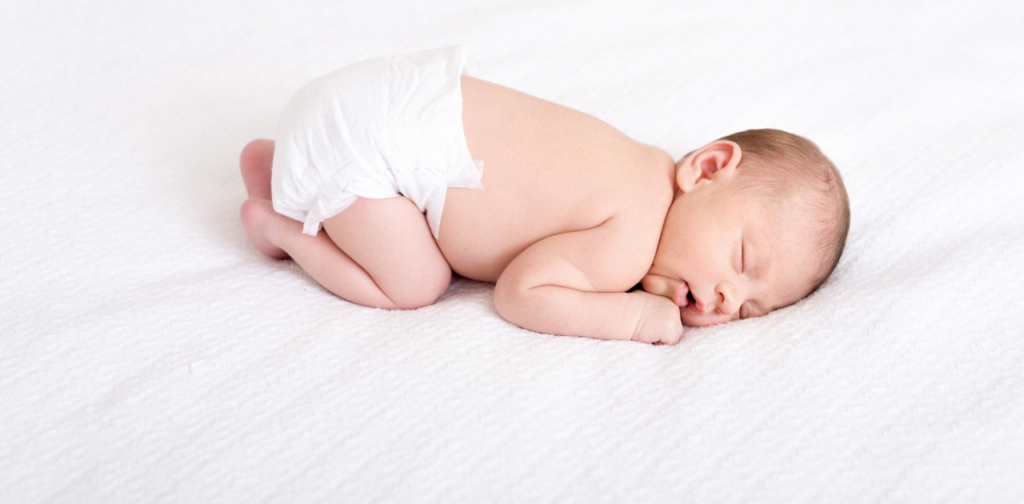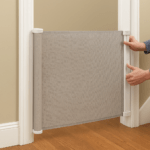Have you ever noticed the amusing sight of a sleeping baby with its tiny buttocks lifted high in the air? The familiar sight of babies peacefully slumbering with their tiny buttocks raised is a captivating image for parents and caregivers alike. This seemingly spontaneous posture, often observed in infants during sleep, prompts curiosity and wonder about its underlying reasons. Beyond its adorable appearance lies a world of physiological and evolutionary significance. Understanding why babies adopt this particular sleep position offers valuable insights into their comfort, development, and overall well-being. In this article, we embark on a journey to unravel the mysteries behind this curious phenomenon, exploring the evolutionary, physiological, and cultural factors that shape infant sleep behaviour.
Join us as we delve into the fascinating world of baby sleep, uncovering the secrets behind why babies prefer to sleep with their buttocks in the air.
Importance of this phenomenon for parents and caregivers
Understanding why babies sleep with their buttocks in the air holds significant importance for parents and caregivers. Here’s why:
- Optimizing Sleep Environment: By comprehending the reasons behind this sleep posture, parents can create a more conducive sleep environment for their babies. This understanding allows them to choose appropriate bedding, adjust room temperature, and arrange sleeping arrangements to promote better sleep quality.
- Enhanced Comfort: Knowing why babies adopt this position enables caregivers to ensure that infants are comfortable during sleep. They can provide support and accommodations that align with the baby’s natural inclinations, leading to more restful sleep for both the infant and caregiver.
- Monitoring Developmental Milestones: Observing a baby’s sleep position can provide insights into their developmental milestones. Understanding how and why infants sleep in certain positions can help caregivers track physical and motor skill development, ensuring the baby is progressing as expected.
- Promoting Safe Sleep Practices: Awareness of this phenomenon aids in promoting safe sleep practices. Caregivers can learn to recognize safe sleep positions and reduce the risk of sudden infant death syndrome (SIDS) by creating a safe sleep environment tailored to the baby’s needs and preferences.
- Strengthening Bonding: Understanding a baby’s sleep habits fosters a deeper bond between parents or caregivers and the infant. It allows caregivers to respond more effectively to the baby’s cues, increasing trust and security in the parent-infant relationship.
Read to Know More: How To Put A Baby To Sleep In 40 Seconds: A Soothing Slumber
Common Sleeping positions of the baby

Babies can adopt various sleeping positions, each with significance and comfort level. Here are some common sleeping positions observed in infants:
- Back Sleeping is the recommended sleeping position for babies, as it reduces the risk of sudden infant death syndrome (SIDS). In this position, babies lie on their backs with their heads turned to one side, arms relaxed by their sides, or gently curled up.
- Side Sleeping: Some babies may naturally prefer sleeping on their side. While this position may seem comfortable for them, it’s not recommended due to the risk of rolling onto their stomach, which can increase the risk of SIDS.
- Stomach Sleeping: Although stomach sleeping was once common, it’s now discouraged due to the increased risk of SIDS. In this position, babies lie on their stomachs with their heads turned to the side. However, some babies may naturally roll onto their stomachs while sleeping.
- Fetal Position: Babies may curl up into a fetal position while sleeping, with their knees drawn up towards their chest and their arms tucked close to their bodies. This position may provide a sense of security and comfort, similar to how they were in the womb.
- Butt in the Air: Another common sleeping position is when babies sleep with their buttocks raised in the air, often with their knees slightly bent. This position may be related to comfort, digestion, or muscle development, and it’s typically safe as long as the baby is sleeping on their back.
Why do babies sleep with their butts up?

Babies often sleep with their buttocks raised in the air for various reasons, reflecting both instinctual behaviours and physiological needs. One possible explanation is that this position mimics the fetal position, which provides a sense of security and comfort reminiscent of their time in the womb. Additionally, infants have underdeveloped muscles, particularly in their abdomens, which can make lying flat on their backs uncomfortable. Raising their buttocks may alleviate pressure on their abdomen and make breathing easier, especially for babies who experience gas or digestive discomfort.
Furthermore, sleeping with their buttocks up may aid digestion and reduce the likelihood of reflux, as gravity helps keep stomach contents from flowing back up the oesophagus. This position may also regulate airflow and temperature, allowing babies to maintain a comfortable body temperature during sleep. While the exact reasons may vary from one baby to another, the preference for sleeping with their buttocks up is generally considered safe and natural, as long as they are placed on their backs to sleep, adhering to safe sleep guidelines to reduce the risk of sudden infant death syndrome (SIDS).
Is it safe for baby to sleep with their butt in the air?
Yes, it’s generally safe for babies to sleep in this position, and it often indicates their comfort and relaxation. Here’s why:
- Natural Comfort: Babies naturally find positions that feel secure and soothing. Sleeping with their buttocks raised may simply be a comfortable position for them.
- Muscle Development: This position can also help develop your baby’s muscles. As they grow, they may find certain positions more comfortable due to muscle strength and flexibility changes.
- Digestive Comfort: Raising their buttocks may also help alleviate discomfort from gas or colic. The position could aid digestion and reduce the chances of reflux, contributing to a more peaceful sleep for your baby.
- Safe Sleep Practices: It’s essential to ensure that your baby is sleeping on their back, as recommended by paediatricians, to reduce the risk of sudden infant death syndrome (SIDS). This position, with the buttocks raised, is generally safe as long as your baby is on their back and the sleep environment is free from any potential hazards.
- Observation and Adaptation: If your baby consistently sleeps in this position and seems content, there’s typically no cause for concern. However, always observe your baby’s sleep habits and adapt to ensure their safety and comfort throughout their development.
Is it cause for concern if my toddler sleeps with their bottom in the air?
Parents often wonder if their toddler’s sleeping position—raised bottom in the air—is cause for concern. Generally, this sleeping position is harmless and even shared among toddlers. It often indicates that your toddler is comfortable and relaxed during sleep. However, suppose this sleeping posture is accompanied by other symptoms such as difficulty breathing, restlessness, or signs of discomfort during the day. In that case, it might be worth discussing with your paediatrician.
Additionally, observe your toddler’s overall sleep quality and behaviour during waking hours. Sleeping with their bottom in the air is likely a harmless quirk if they seem well-rested and energetic. Remember to ensure that your toddler’s sleep environment is safe, with no loose bedding or objects that could pose a suffocation hazard. Ultimately, every child is unique, so trust your instincts and consult your paediatrician if you have any concerns about your toddler’s sleep habits.
What should I do?

If your toddler sleeps with their bottom in the air and seems to be in a comfortable and natural sleeping position, there’s generally no need to intervene. However, here are some general tips to ensure your toddler’s sleep environment is conducive to safe and healthy sleep:
- Safe Sleep Position: Pediatricians recommend consistently placing your toddler on its back to sleep to reduce the risk of sudden infant death syndrome (SIDS).
- Comfortable Bedding: Ensure your toddler’s mattress is firm and fits snugly in the crib or bed frame. Use minimal and snug-fitting bedding to reduce the risk of suffocation.
- Temperature Control: Keep the room comfortable for sleep, neither hot nor cold. Dress your toddler in breathable sleepwear appropriate for room temperature.
- Routine and Consistency: Establish a bedtime routine to help your toddler wind down before sleep. Consistency in bedtime and wake-up times can also help regulate your toddler’s sleep patterns.
- Monitor for Changes: Monitor your toddler’s sleep habits and behaviour during waking hours. If you notice any changes or discomfort, consult your paediatrician for guidance.
Tips for safe sleep practices regardless of position
Here are some tips for safe sleep practices regardless of your child’s sleeping position:
- Back to Sleep: Always place your baby on their back for sleep, whether they prefer to sleep with their buttocks raised, on their side, or in another position. This reduces the risk of sudden infant death syndrome (SIDS) and promotes safer sleep.
- Firm Sleep Surface: Use a firm mattress or sleep surface with a fitted sheet. Avoid soft bedding, such as pillows, blankets, or plush toys, that could pose a suffocation hazard.
- Safe Sleep Environment: Ensure that the crib or sleep area is free from hazards, such as loose cords, plastic bags, or small objects that your baby could choke on. Keep the crib bare and free from clutter to reduce the risk of accidents.
- Room Sharing: Share a room with your baby, not a bed. Room sharing can help monitor your baby’s sleep and provide comfort and reassurance while sleeping in the same bed, increasing the risk of suffocation or entrapment.
- Avoid Overheating: Dress your baby in lightweight, breathable sleepwear appropriate for the room temperature. Overheating increases the risk of SIDS, so ensure your baby is not too hot during sleep.
- Regular Check-ins: Periodically check on your baby during sleep to ensure they are safe and comfortable. Use a baby monitor to monitor their sleep and respond promptly to signs of distress.
- Avoid Smoking and Alcohol: Keep the sleep environment smoke-free and avoid alcohol and drug use, as these factors increase the risk of SIDS.
FAQ
Is it safe for my baby to sleep with their buttocks in the air?
Yes, it’s generally safe for babies to sleep in this position. However, always ensure that your baby is placed on their back to sleep, as recommended by paediatricians to reduce the risk of sudden infant death syndrome (SIDS).
Why do babies sleep with their buttocks raised?
Babies may sleep with their buttocks raised for various reasons, including comfort, digestion, muscle development, and temperature regulation. This position may also mimic the fetal position, providing the baby with a sense of security and comfort.
Should I be concerned if my baby consistently sleeps in this position?
If your baby is otherwise healthy and sleeps soundly, there’s typically no cause for concern. However, if you notice any signs of discomfort or your baby’s sleep patterns change significantly, it’s best to consult your paediatrician for guidance.
How can I ensure my baby sleeps safely regardless of their position?
Follow safe sleep practices by placing your baby on their back to sleep, using a firm mattress with minimal bedding, maintaining a comfortable room temperature, and avoiding smoking or alcohol use around your baby’s sleep environment.
When will my baby outgrow this sleeping position?
Every baby is different, and sleeping habits can vary. Some babies may continue to sleep with their buttocks raised for several months, while others may naturally transition to various sleeping positions as they grow and develop.
Conclusion
In conclusion, understanding why babies sleep with their buttocks raised provides valuable insights into their comfort, development, and well-being. While this sleeping position may seem curious, it’s generally safe and natural, reflecting a combination of instinctual behaviours and physiological needs. By prioritizing safe sleep practices and creating a conducive sleep environment, parents can support their baby’s individual sleep preferences while promoting optimal sleep quality and reducing the risk of SIDS.















